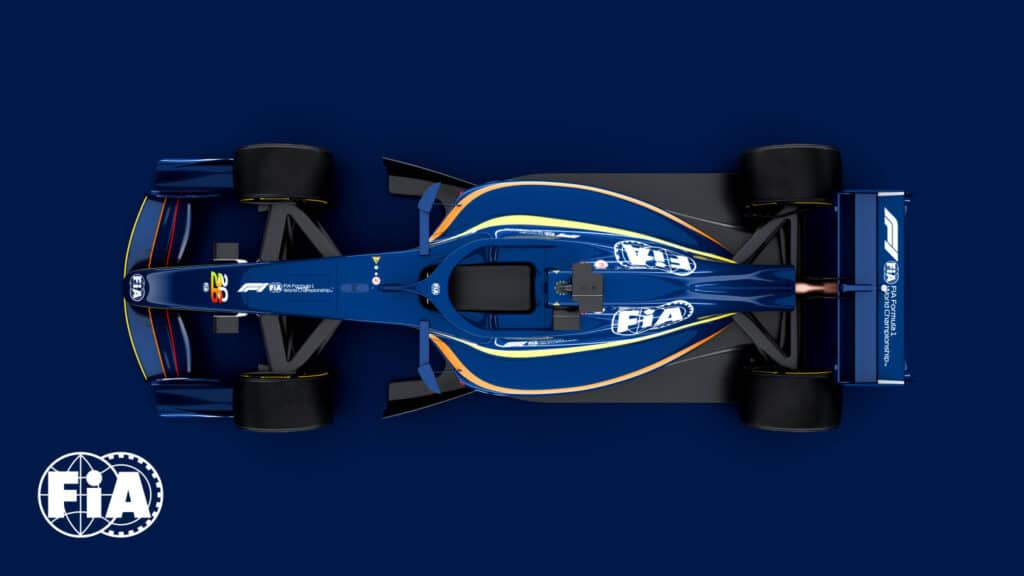Formula 1’s governing body, the FIA, has introduced an “agile, competitive, safer, and more sustainable” set of regulations that will shape the sport from 2026 and beyond. These revised aerodynamic regulations will complement new power unit rules, which include increased battery power and the use of 100% sustainable fuels.
From 2026 onwards, Formula 1 will feature:
- More agile cars: 30kg lighter, enhancing on-track battles.
- Redesigned power units: Increased battery power and a balanced split between internal combustion and electric power, utilizing 100% sustainable fuels.
- Active aerodynamics: Moveable front and rear wings for closer racing.
- Increased overtaking opportunities: A new system providing a burst of additional battery power when within one second of the car ahead.
- Improved safety: Stronger structures and more rigorous tests.
- Commitment from six power unit manufacturers
The FIA has outlined the revised technical regulations ahead of their formal announcement in Montreal at the Canadian Grand Prix. The World Motor Sport Council expects to ratify the regulations on June 28.
Nikolas Tombazis, FIA Single Seater Technical Director, explained: “With these regulations, we aim to develop a new generation of cars that align with the DNA of Formula 1 – light, fast, agile, and technologically advanced. We have achieved a ‘nimble car’ concept through a redesigned power unit with an even split between internal combustion and electric power.
Additionally, we have reduced the car’s size and weight by 30kg, resulting in more dynamic performance. New features such as active aerodynamics and a Manual Override system will enhance racing.”

Focus on Sustainability and Competition
The 2026 FIA Formula One Technical Regulations are designed to promote closer racing, increase competition among teams, and enhance the overall spectacle. The regulations emphasize a higher electrical component in the power unit, greater efficiency, and fully sustainable fuels, contributing to a more sustainable future for the sport.
Statements from FIA Leadership
FIA President Mohammed Ben Sulayem stated, “Today, we are defining an exciting future for Formula 1 with a comprehensive new set of regulations for 2026 and beyond. By redefining chassis regulations to match the energy requirements of the new power units, we have created a unique revision that ensures our premier championship remains relevant.
These regulations, combined with chassis regulations for lighter, more agile cars, aim to improve racing and attract PU manufacturers, OEMs, and existing competitors. The key features are advanced sustainability technology and safety, ensuring a car that fits the future of the sport.”
Power Unit and Energy Recuperation Enhancements
While hybrid unit power will decrease from 550-560kw to 400kw, the battery element will see a significant rise from 120kw to 350kw – an almost 300% increase. The energy recuperation during braking will double to 8.5 MJ per lap.
Commitments from Manufacturers
The new regulations have secured commitments from existing suppliers Ferrari, Mercedes, and Renault, while attracting Honda’s return and the arrival of Audi and Ford through a partnership with Red Bull Powertrains.
Design and Performance Improvements
To create more agile racing machines, the maximum wheelbase has been reduced by 200mm to 3400mm, and the width by 100mm to 1900mm. The minimum weight has been reduced by 30kg to 768kg compared to 2022 models. The FIA also reports a 30% reduction in downforce and a 55% reduction in drag.
Pirelli’s 18-inch wheel size, introduced in 2022, will remain, but the 2026-spec front tires will be 25mm narrower, and the rears 30mm narrower than previous generations. The 2026 cars will feature two configurations to either minimize fuel consumption or maximize cornering performance.
Active Aerodynamics and Safety Enhancements
New active aerodynamics systems, including movable front and rear wings, will be introduced, allowing greater cornering speeds with one wing angle and lower drag with greater straight-line speed with another. This system will operate in zones similar to the current DRS overtaking aid.
Safety regulations have been updated with a two-stage nose design to mitigate detachment risk during impacts and stricter side intrusion rules, enhancing driver and fuel cell protection.
Commitment to Sustainability
The 2026 power units will run on fully sustainable fuels as part of F1 and FIA’s goal to achieve Net Zero Carbon by 2030. The power units will shift to a 50% electrical and 50% thermal power distribution, reflecting a commitment to sustainability and technological advancement in motorsport.














